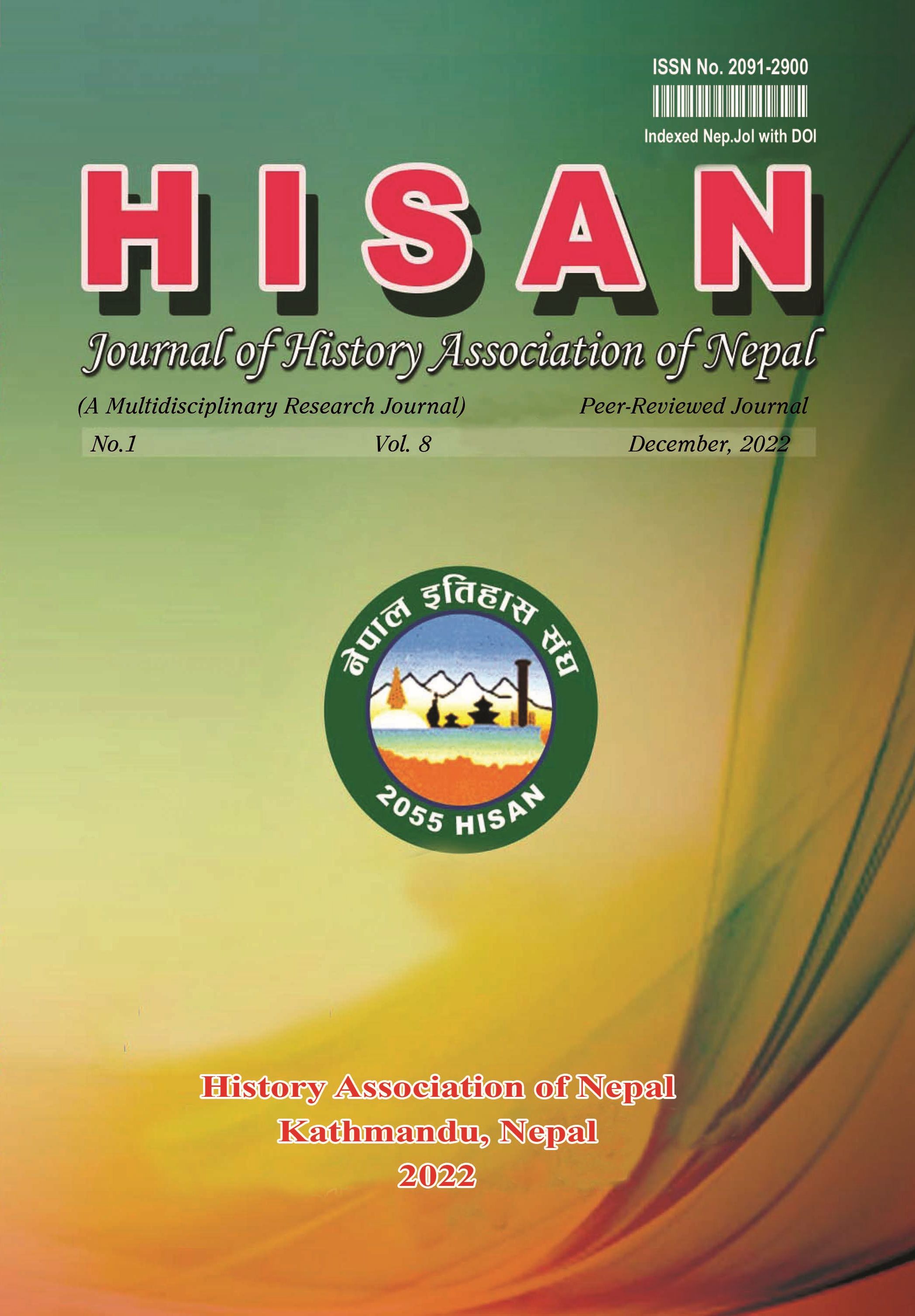Mustang where civilization flourished
DOI:
https://doi.org/10.3126/hisan.v8i1.53076Keywords:
Biodiversity, prehistoric caves, cultural uniqueness, Lo-Tsho Dun, Serib (Bara Gaun), Tibetan Plateau, massifs, amonite, fossil, Tethys Sea, PetroglyphsAbstract
Mustang is one of the Trans-Himalayan districts of western Nepal, famous for its biodiversity, geology, prehistoric caves and cultural uniqueness. Geographically, it is divided into Upper and Lower Mustang. The area north of Kagbeni is Upper Mustang or Lo-Tsho Dun which consists Lomanthang, Charang, Dhee, Surkhang, Yara Ghara, Tangya, Dhey, Ghemi, Dhakmar, Marang, Ghiling, Chonup and Chhoser and south area of Kagbeni is called Serib (Bara Gaun) which consists of Lupra, Kagbeni, Khinga, Jharkot, Muktinath, Dzong, Tangbe, Chhuksang, Tetang, Tsaile, Ghyakar, Samar. In the south is the area of Thak Saatsae, which literally means seven hundred houses, which comprised of the villages of Ghasa, Lete, Kalopani, Taglung, Kunjo, Larjung, Kobang, Naurikot, Khanti, Tukuche. Culturally, this area is dominated by the Thakalis. The Panch Gaun is comprised of Chimang, Chairo, Marpha, Syang and Thini. The Kaligandaki River flows from the Tibetan Plateau, cutting through Himalayas and ends up flowing into the Ganges of northern India. While flowing between the Annapurna and Dhaulagiri massifs, the Kaligandaki forms the deepest river valley in the world. It is the only river where Shaligram or ammonite is found. Ammonite is considered as a fossil of the Tethys Sea. Mustang was a famous salt route through north to south trade. There are many abandoned settlement ruins like Ghemi, where exploration and excavation is necessary.




